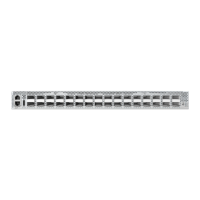C
HAPTER
13
| Security Measures
Configuring 802.1X Port Authentication
– 392 –
◆ This switch can be configured to serve as the authenticator on selected
ports by setting the Control Mode to Auto on the Authenticator
configuration page, and as a supplicant on other ports by the setting
the control mode to Force-Authorized on that configuration page and
enabling the PAE supplicant on the Supplicant configuration page.
PARAMETERS
These parameters are displayed:
◆ Port – Port number.
◆ PAE Supplicant – Enables PAE supplicant mode. (Default: Disabled)
If the attached client must be authenticated through another device in
the network, supplicant status must be enabled.
Supplicant status can only be enabled if PAE Control Mode is set to
“Force-Authorized” on this port (see "Configuring Port Authenticator
Settings for 802.1X" on page 387).
PAE supplicant status cannot be enabled if a port is a member of trunk
or LACP is enabled on the port.
◆ Authentication Period – The time that a supplicant port waits for a
response from the authenticator. (Range: 1-65535 seconds;
Default: 30 seconds)
◆ Held Period – The time that a supplicant port waits before resending
its credentials to find a new an authenticator. (Range: 1-65535
seconds; Default: 30 seconds)
◆ Start Period – The time that a supplicant port waits before resending
an EAPOL start frame to the authenticator. (Range: 1-65535 seconds;
Default: 30 seconds)
◆ Maximum Start – The maximum number of times that a port
supplicant will send an EAP start frame to the client before assuming
that the client is 802.1X unaware. (Range: 1-65535; Default: 3)
◆ Authenticated – Shows whether or not the supplicant has been
authenticated.
WEB INTERFACE
To configure port authenticator settings for 802.1X:
1. Click Security, Port Authentication.
2. Select Configure Interface from the Step list.
3. Click Supplicant.
4. Modify the supplicant settings for each port as required.
5. Click Apply

